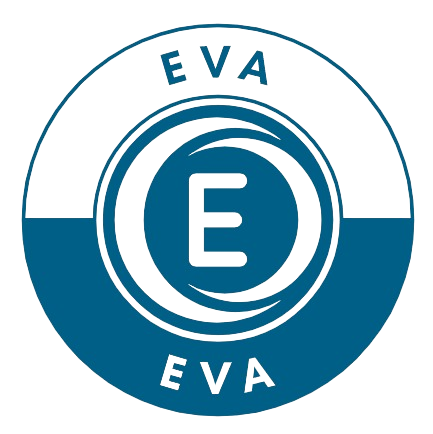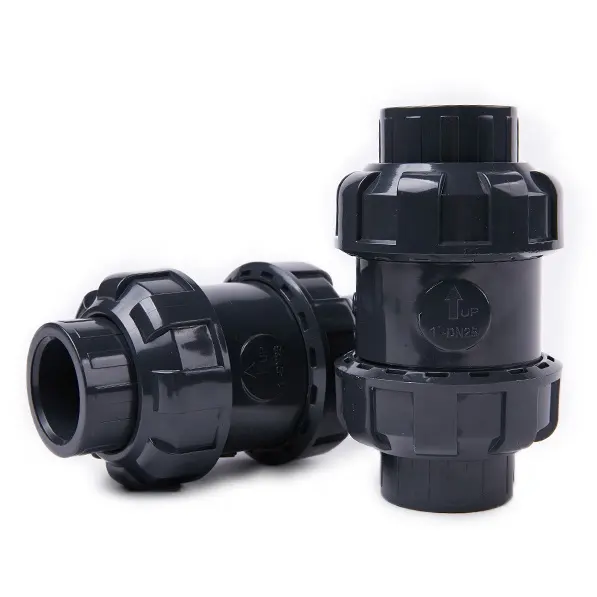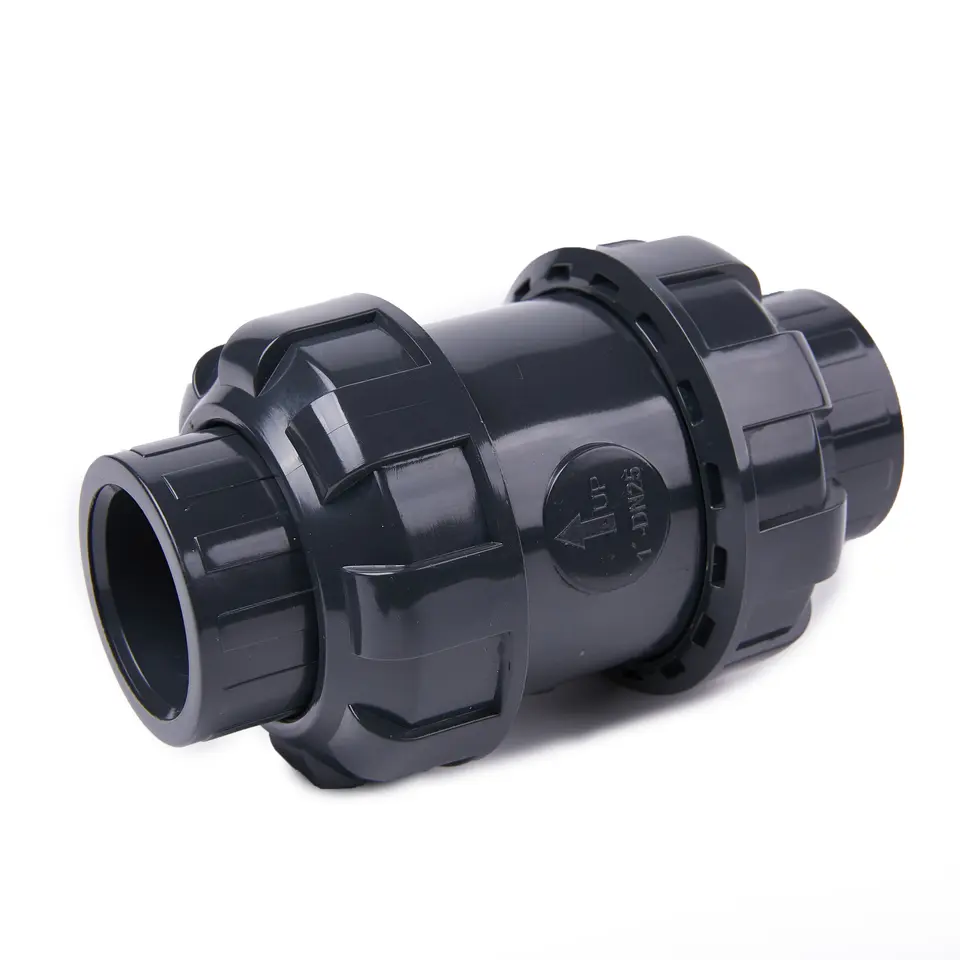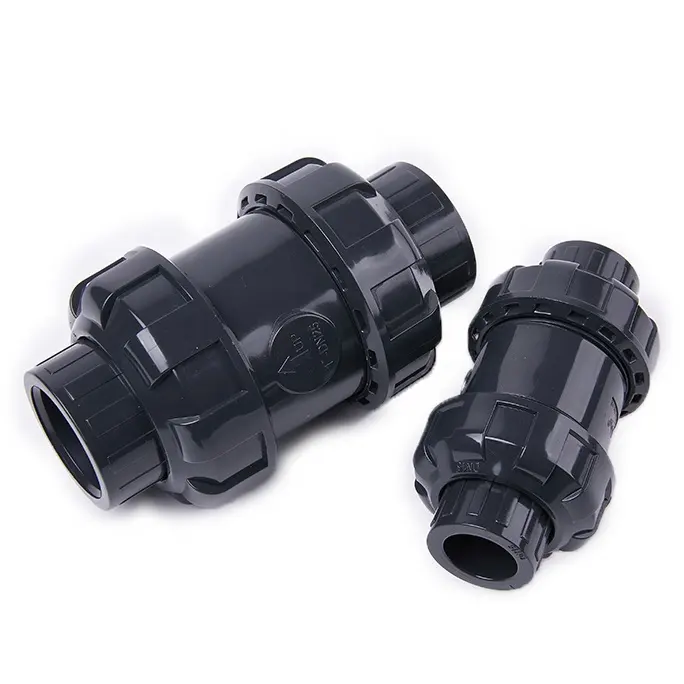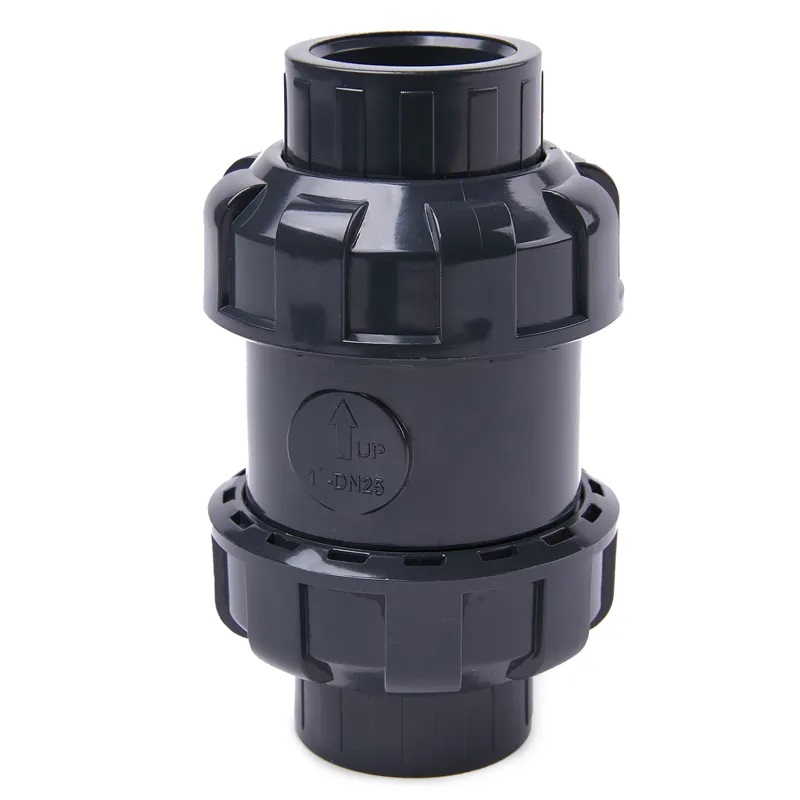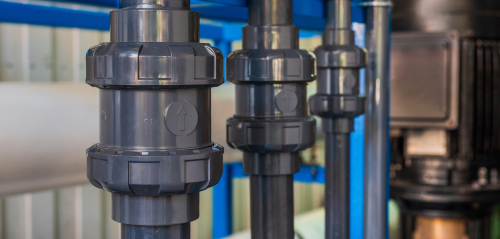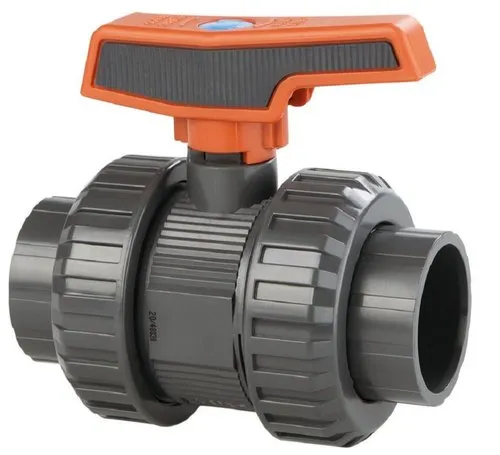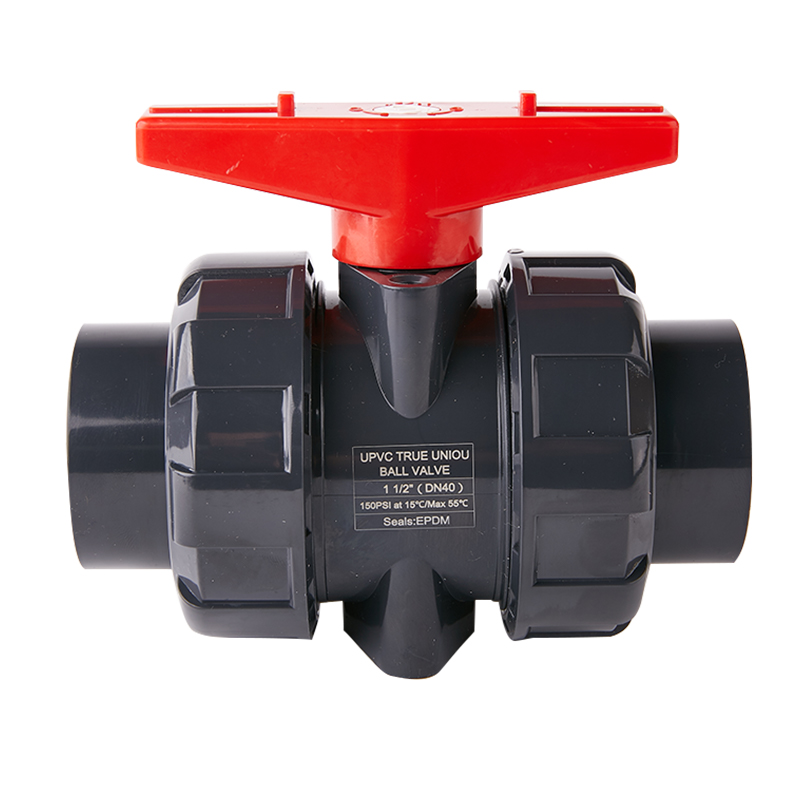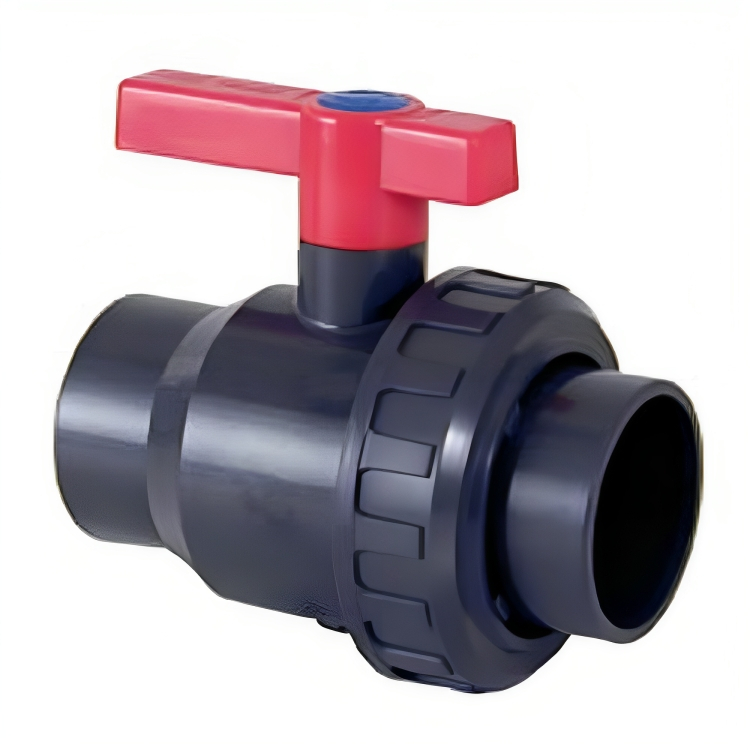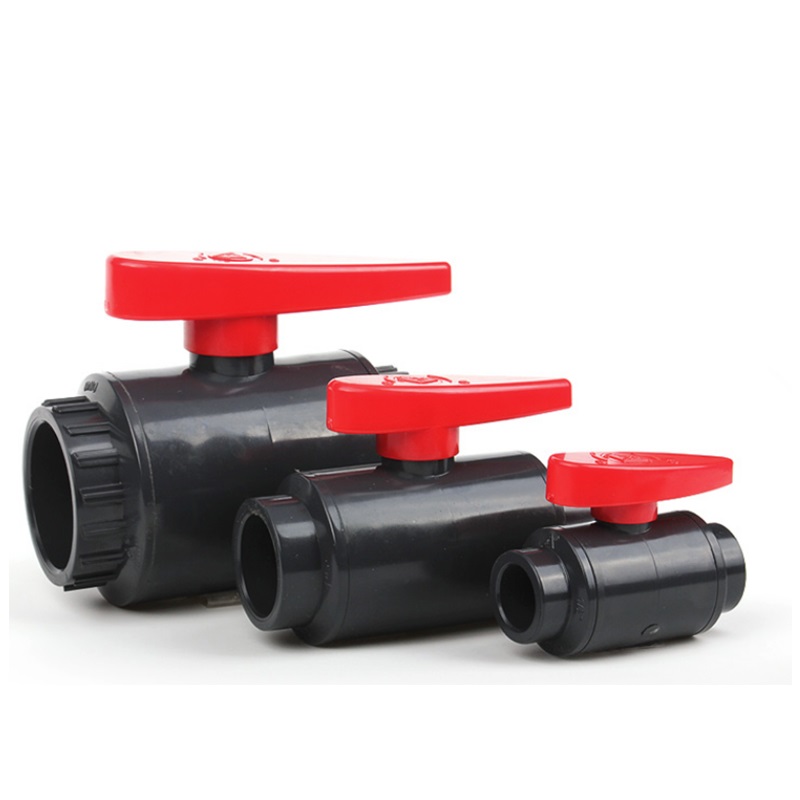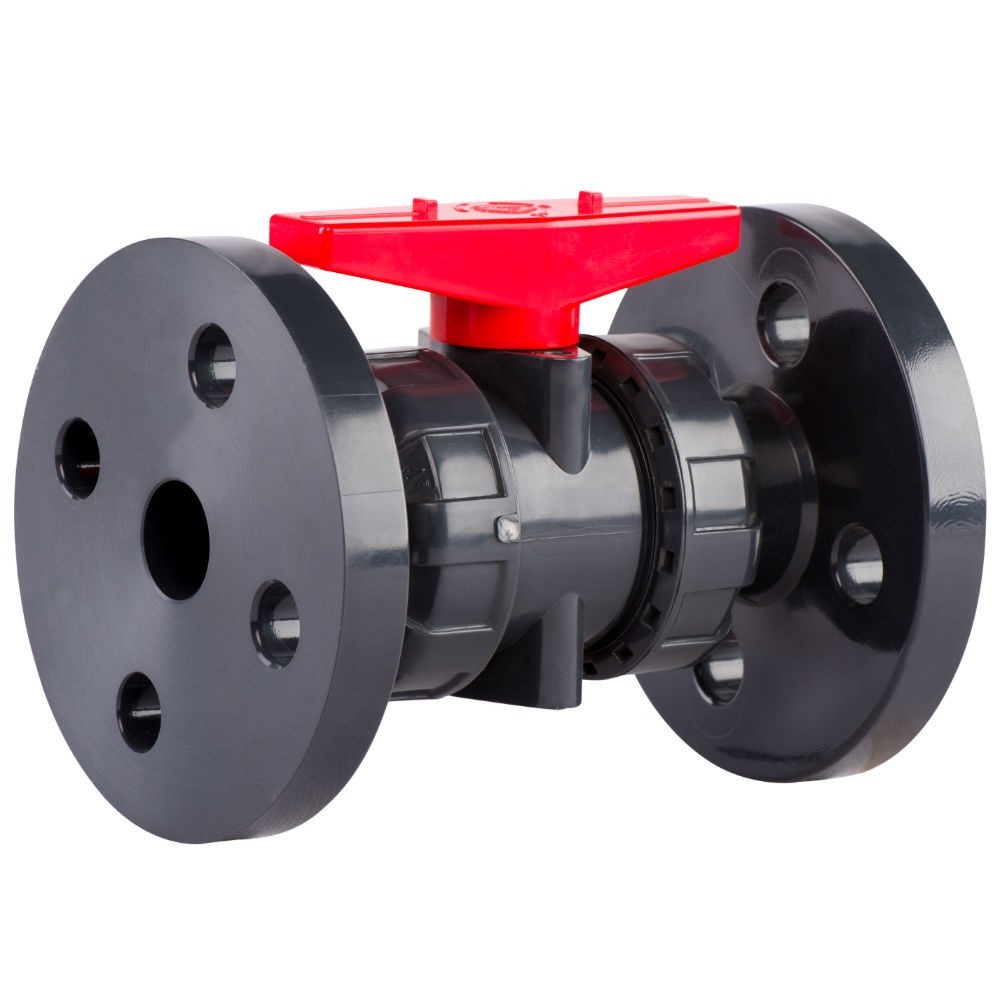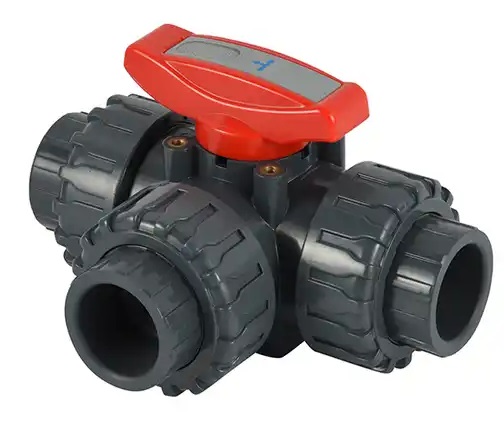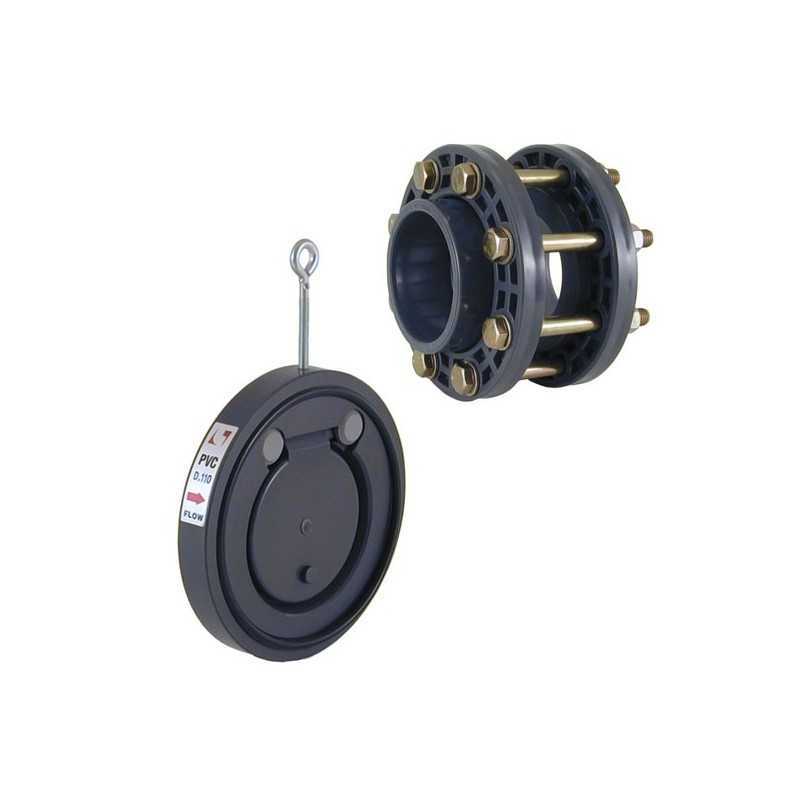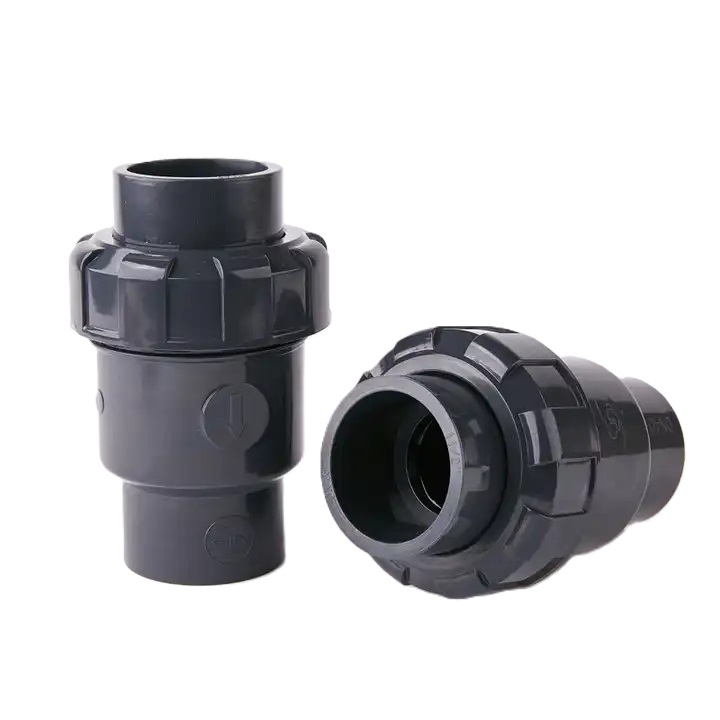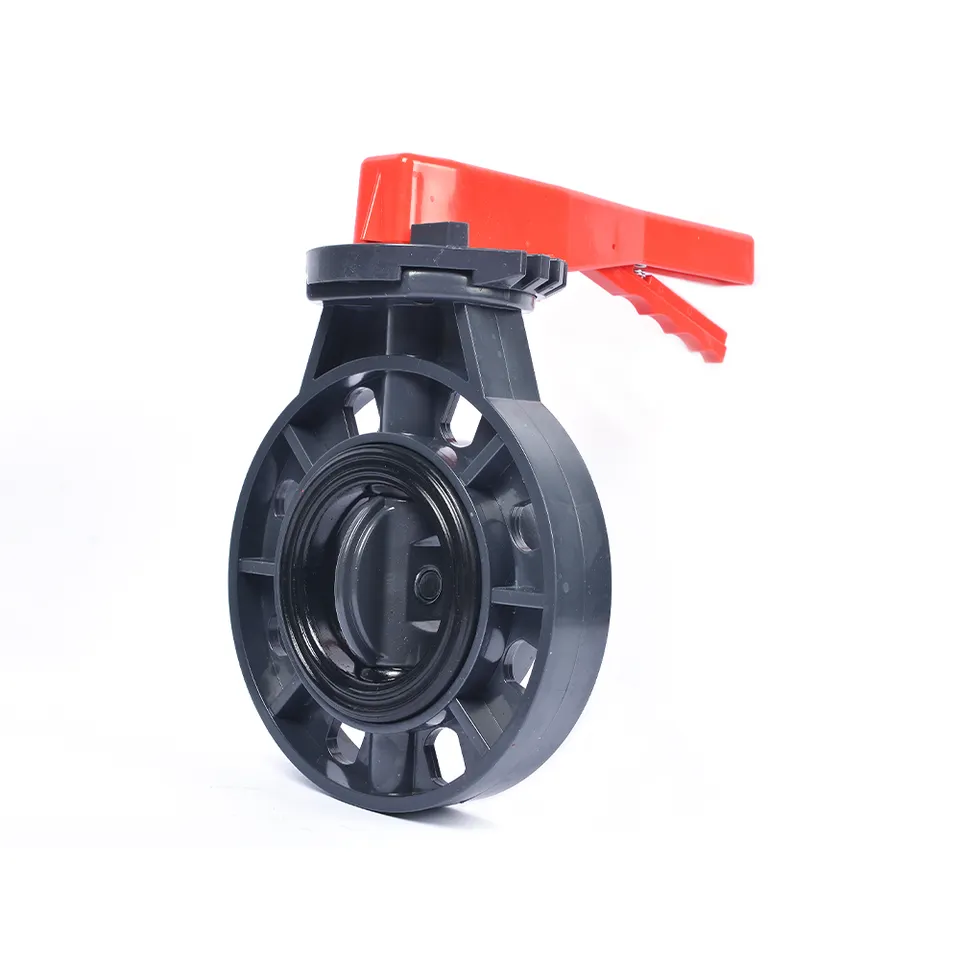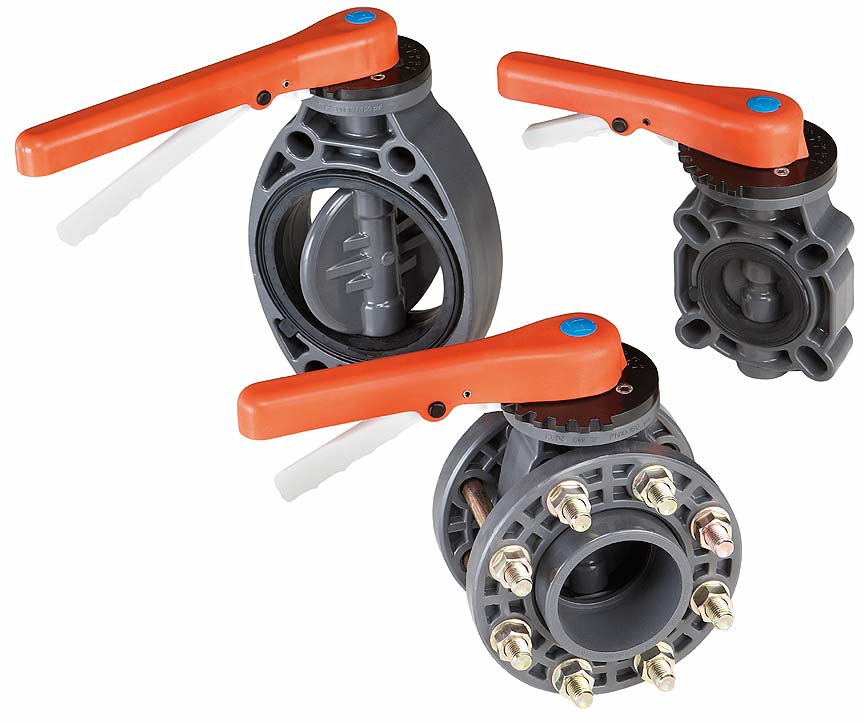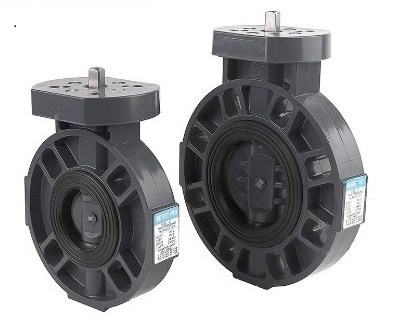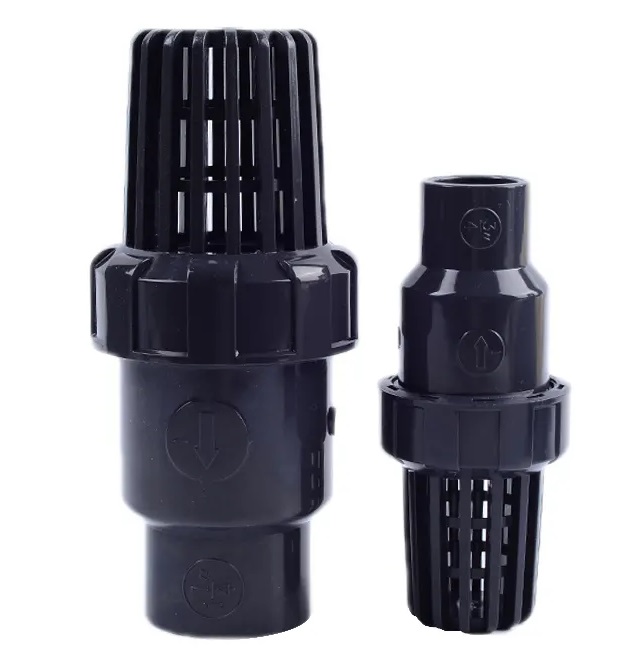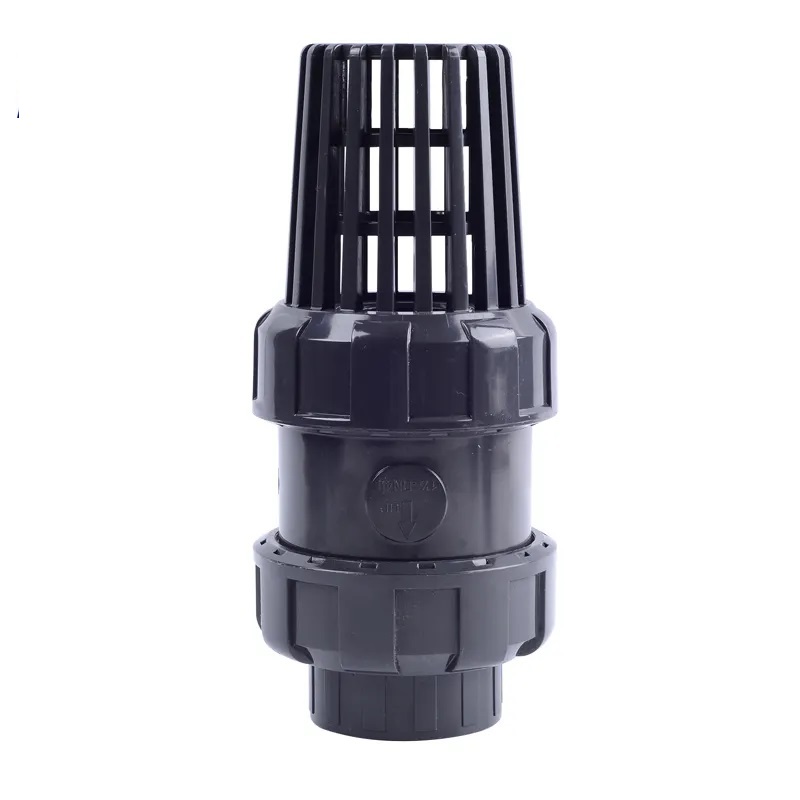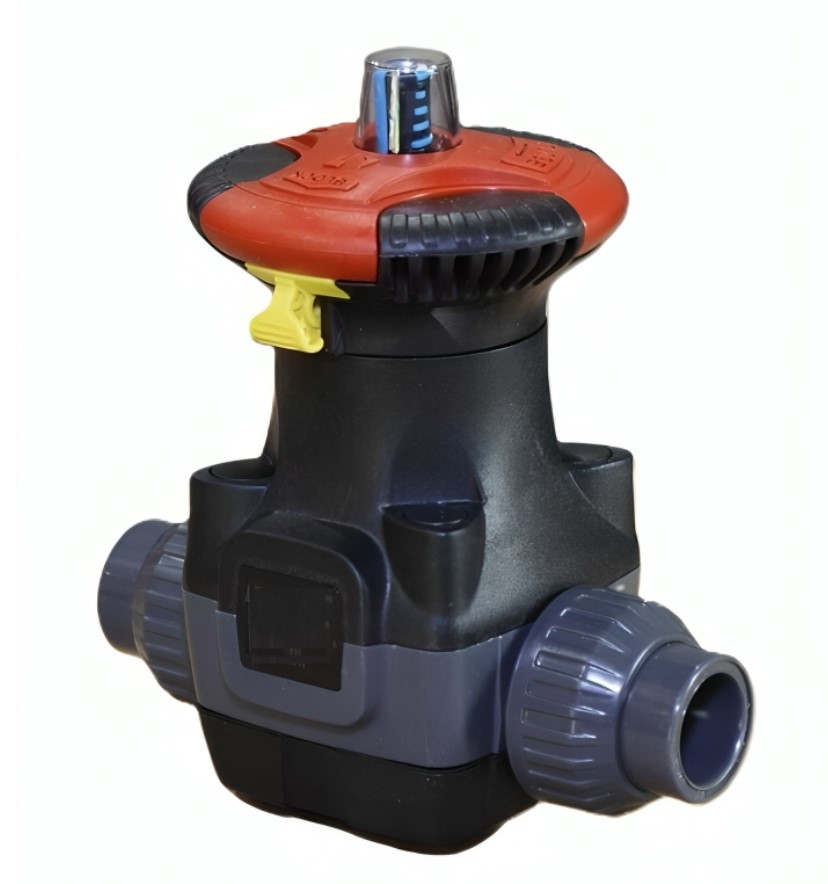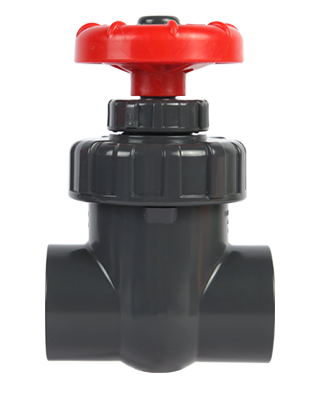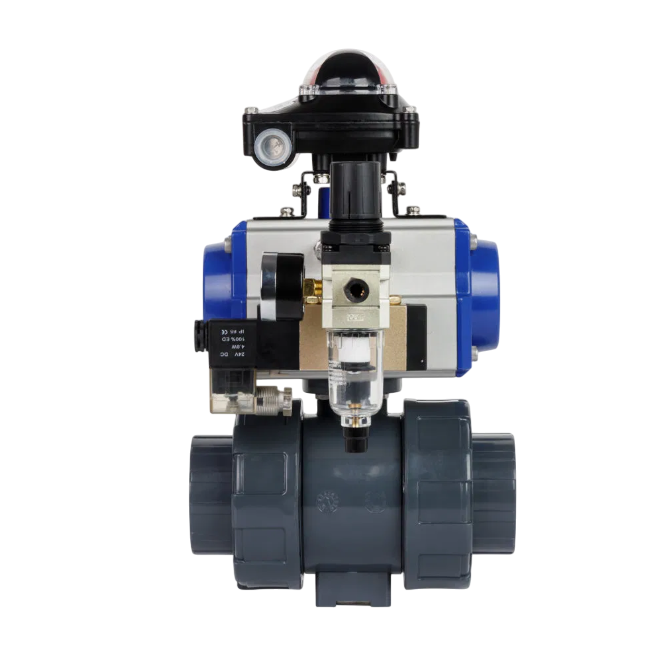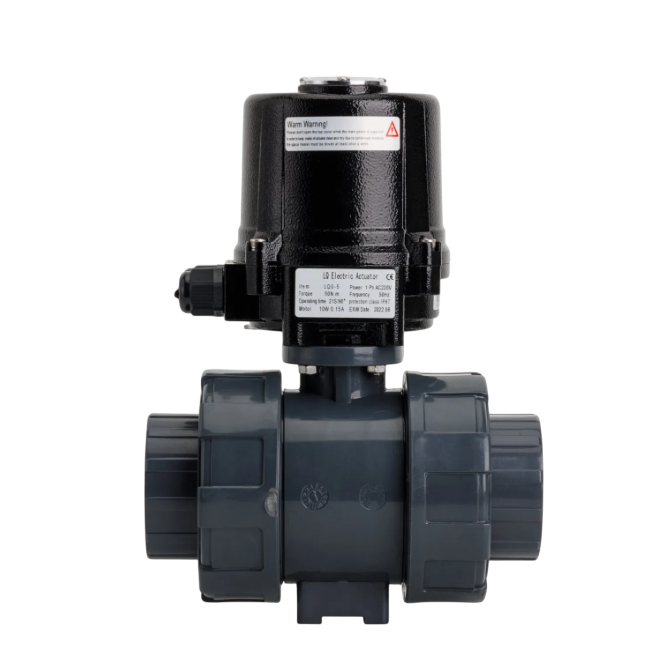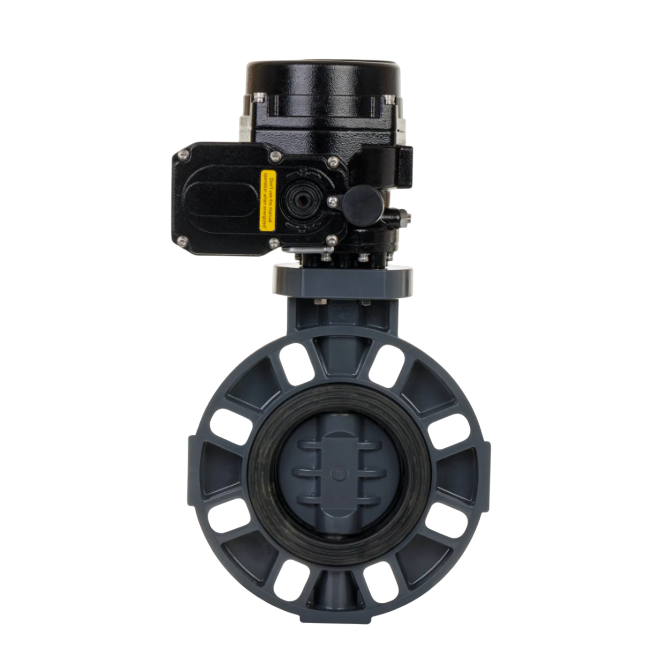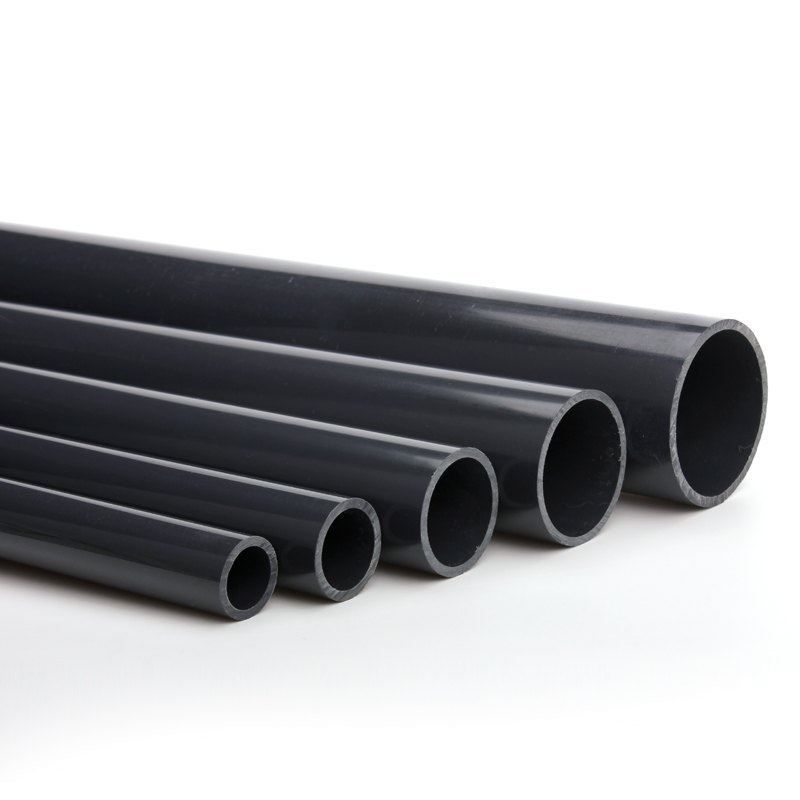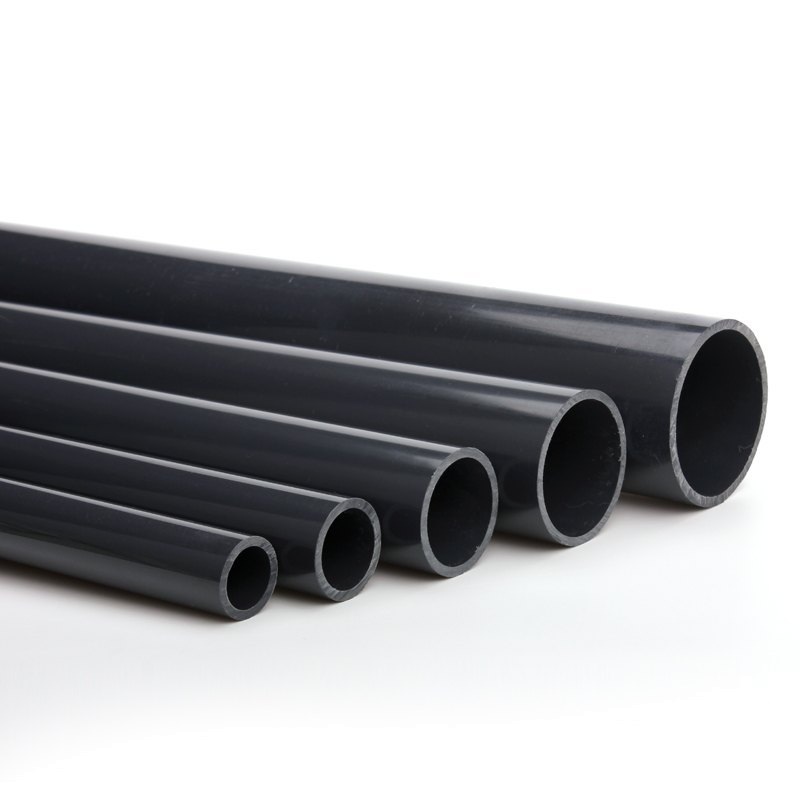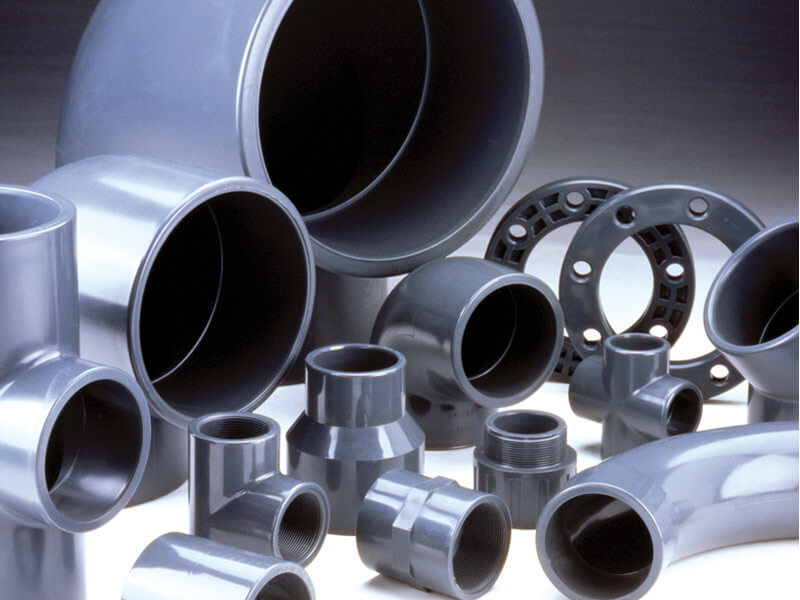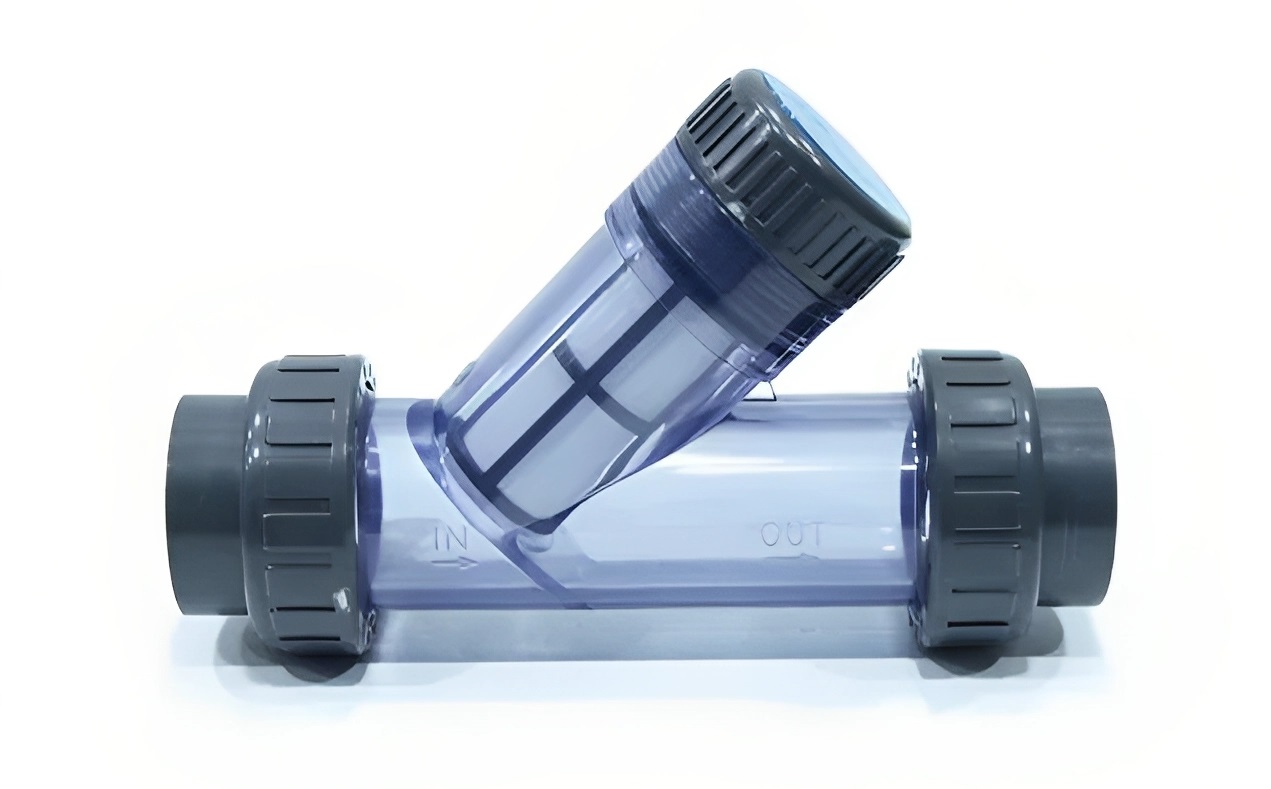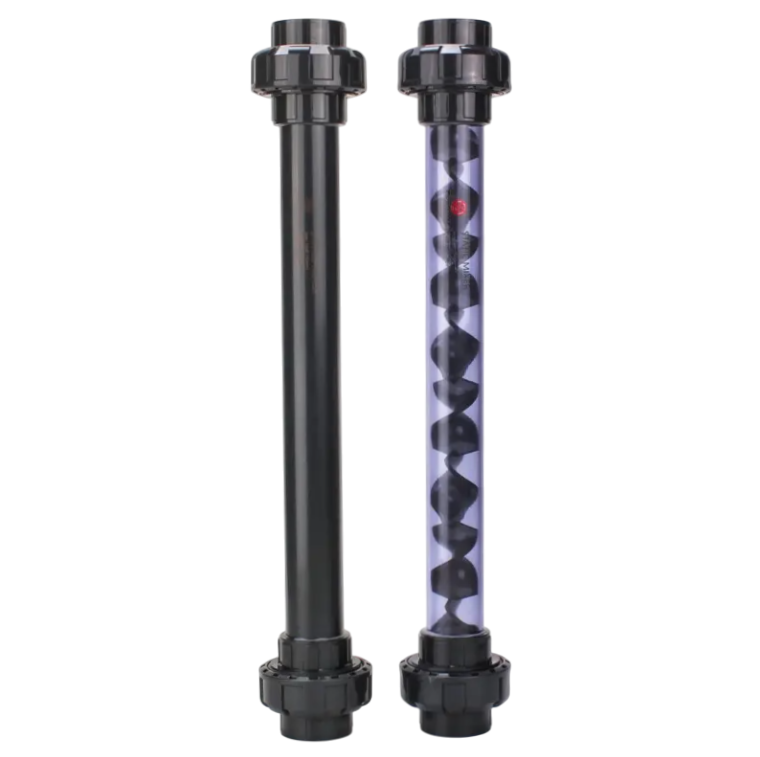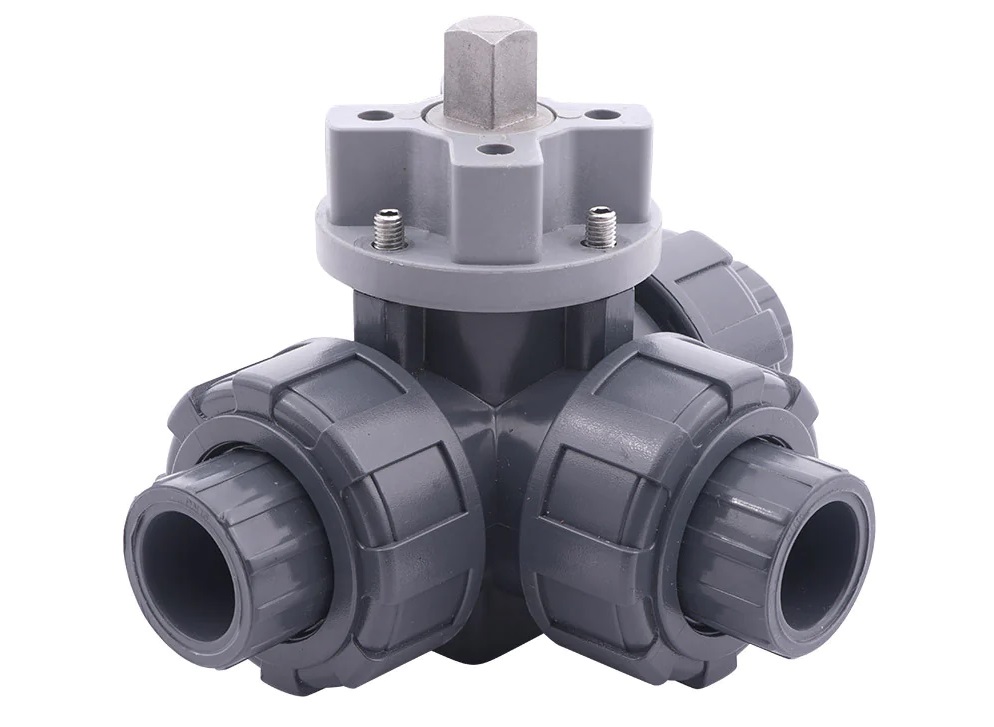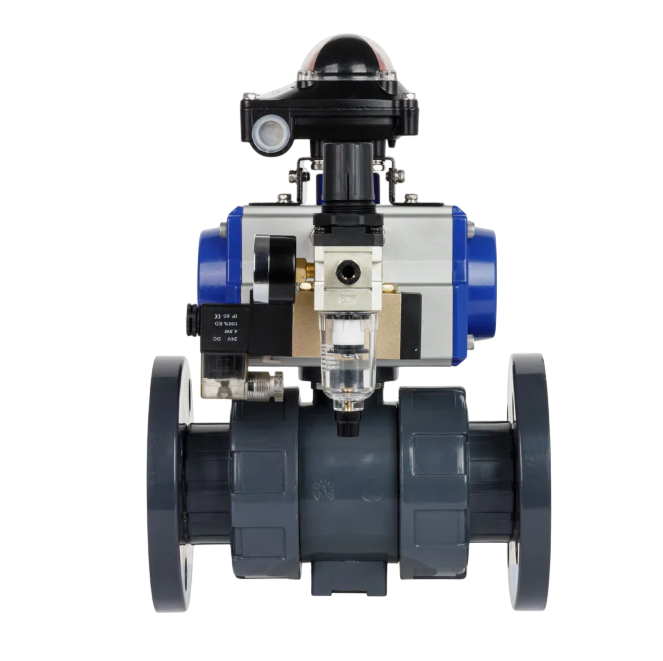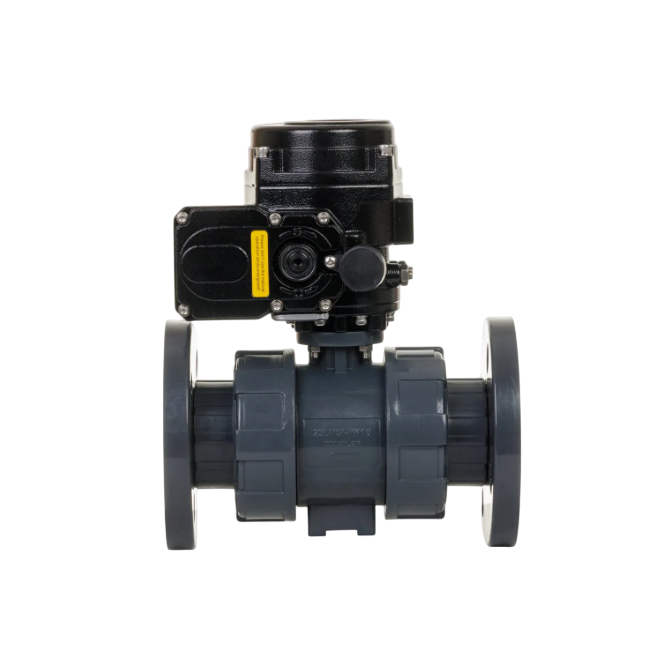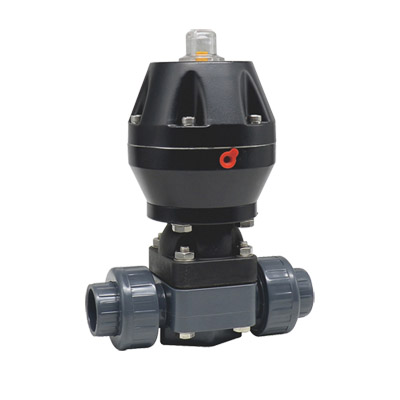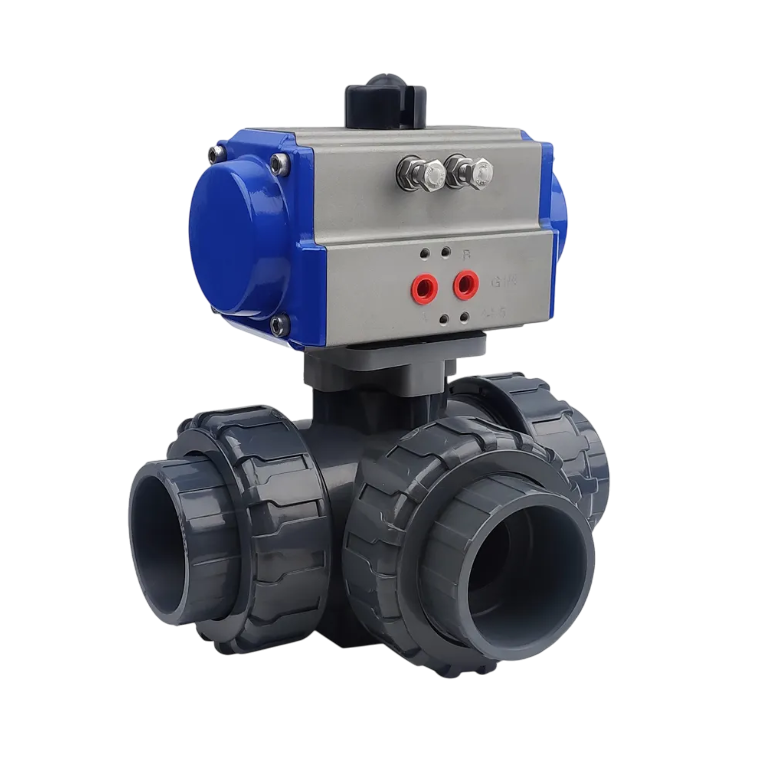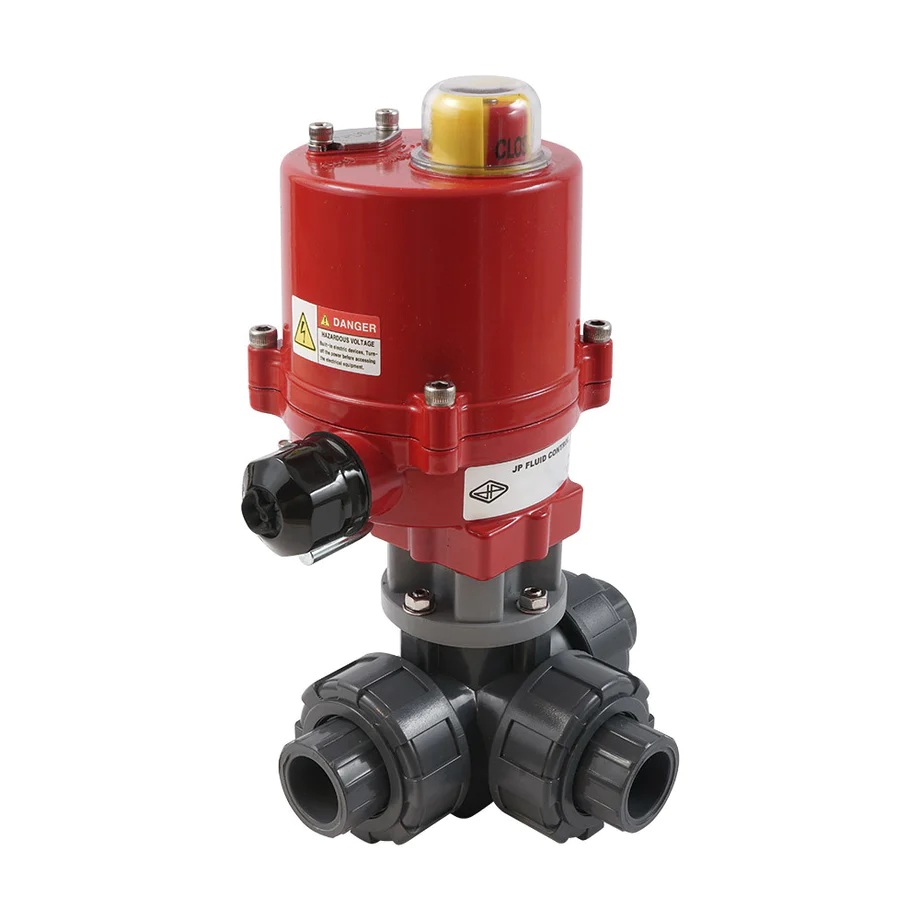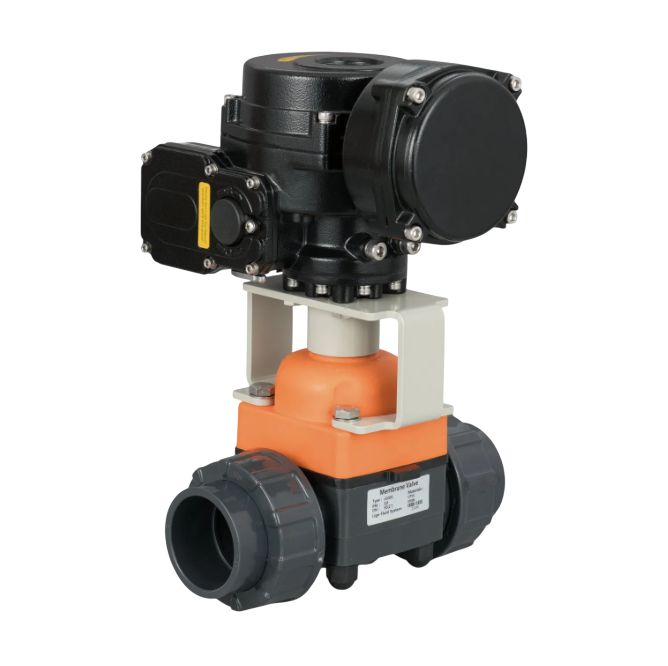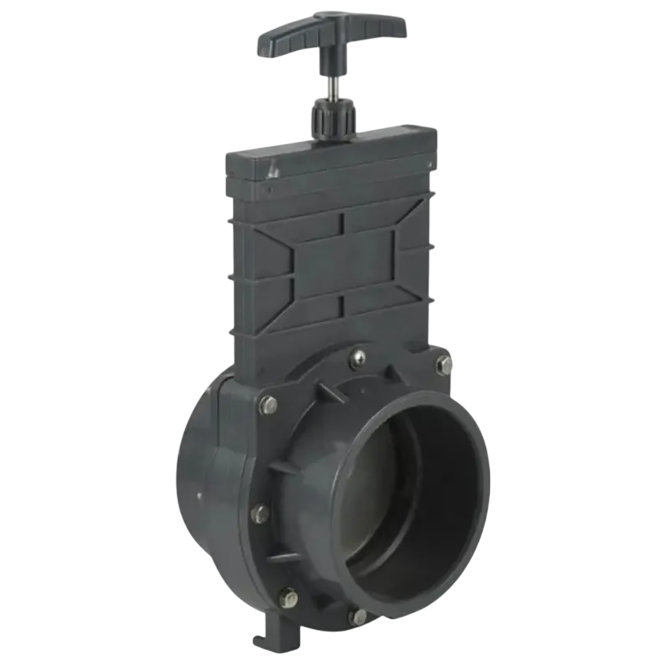| FIG. | PARTS | MATERIAL |
| 1 | End Connector | U-PVC |
| 2 | Union Nut | U-PVC |
| 3 | End Connector O-ring | EPDM |
| 4 | Seal Carrier - Support | U-PVC |
| 5 | Ball | U-PVC |
| 6 | Body | U-PVC |
| 7 | End Connector O-Ring | EPDM |
A UPVC ball check valve is a fluid control device that uses a rubber-coated ball to regulate the flow of liquids and gases. They are commonly used in water and wastewater applications, and are a preferred choice for many industries due to their robust construction, chemical resistance, and efficient operation:
- FeaturesUPVC ball check valves can have socket, threaded, or flanged end connections, and come in sizes from 20mm to 100mm. They can be made from UV-stabilized PVC, and may have PTFE seats and a double stem seal system.
- OperationThe ball moves in and out of the seat as the flow of water moves forward and in reverse. The ball seals by gravity in the vertical position, and at 2 to 4 P.S.I. backpressure in other positions.
- ApplicationsUPVC ball check valves are used in a variety of applications, including water treatment, pool filtration, chemical dosing, and aquaculture. They are also used to prevent backflow in commercial and industrial settings.
- BenefitsUPVC ball check valves have a number of benefits, including a ball orbital design that lowers the risk of leaking, a hollow ball design that improves the seal, and a simple structure that makes it easy to diagnose and repair.
